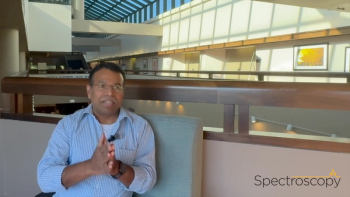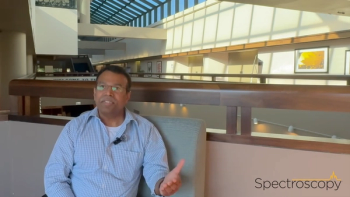Key Points
- Using SEM, EDS, μ-XRF, and XRD, researchers identified mineral structures like framboidal pyrite and evidence of sulfate-reducing bacteria that created anoxic, low-pH environments favorable for fossilization in the São Carlos Shale.
- The study found that chitin-rich invertebrates and phosphorus-rich fish bones were preserved via calcium phosphate formation, while biofilms facilitated the incorporation of metals like iron and copper into fossil structures.
- Despite being a single outcrop, the site’s lacustrine origin, microbial fossilization processes, and geochemical data significantly enhance the fossil record and taphonomic understanding of the Bauru Basin.
Spectroscopy techniques such as scanning electron microscopy (SEM) and electron detector spectroscopy (EDS) can help uncover new information about the preservation of ancient fossils, according to a recent study. This study, which was published in the Journal of South American Earth Sciences, was conducted by researchers from several universities and institutions in Brazil (1). Through the exploration of the São Carlos Shale, which is a geologic unit located in the eastern portion of the Bauru Basin, the researchers used SEM and EDS to learn more about the paleoenvironment and taphonomic dynamics of the Upper Cretaceous period.
What is the Bauru Basin and why is it significant?
The Bauru Basin is a geological formation in southeast Brazil. It is significant to researchers and scientists because it contains many fossil records, especially of the Upper Cretaceous period. In this basin, the main fossil occurrences are in the lagoon deposits, which often contain complete skeletons (2). Back on the evidence that has been uncovered, scientists have learned that this is where Brazilian dinosaurs, turtles, and crocodiles lived during the Upper Cretaceous period (2).
Despite the archaeological work done in the basin, the São Carlos Shale stands out because of its lacustrine origin, which had not been previously documented in the region (1). The fossils retrieved from this site include a variety of plants, invertebrates, and vertebrates, all of which are preserved to varying degrees thanks to unique diagenetic processes that occurred in the ancient lake (1).
What was the experimental procedure and main objective of the study?
As part of the experimental procedure, the researchers utilized SEM and EDS to better understand the environmental and chemical conditions that helped preserve the fossils in the São Carlos Shale area. SEM and EDS were used to determine the elemental composition and visualize key mineral structures, such as framboidal pyrite within the invertebrate fossils (1). The researchers discovered that microbial activity took place here, especially from sulfate-reducing bacteria, which they determined from the presence of biofilm residues (1).
Besides SEM and EDS, the researchers also used micro-X-ray fluorescence (μ-XRF) mapping. This technique was helpful in analyzing the elemental distribution across fossilized remains (1). The researchers also used X-ray diffraction (XRD) to great effect. XRD was used to characterize the bulk rock, which allowed the researchers to determine the mineralogical makeup of the surrounding shales (1).
This multi-step approach, with several analytical techniques playing key roles, confirmed that microbial processes did contribute to fossilization in this area. The decay of organic matter by sulfate-reducing bacteria created anoxic conditions at the bottom of the lake, enabling the formation of pyrite and establishing low pH environments that influenced mineral transformations in the fossils (1).
Another key observation was that the conchostracan carapaces, composed partly of chitin, were also preserved via a process known as apatite precipitation. Apatite precipitation is a process where calcium phosphates form from a solution (3). This same process also contributed to the conservation of teleost fish bones, which are naturally rich in phosphorus (1). According to the study, bioapatite, which is the primary mineral component in bones, can maintain its structural integrity even under low pH conditions, explaining the remarkable preservation of these vertebrate remains (1).
What were the study’s main findings?
The main finding of the study is that microbial biofilms and extracellular polymeric substances (EPS) contributed to fossil preservation. EPS allowed for elements such as iron, copper, zinc, and vanadium to merge into the original biominerals of the fossils (1). These elements diffused into the remains during fossilization and altered their chemical composition and appearance. For instance, gastropod shells were observed to darken as these metals were absorbed or as pyrite formed within the molds (1).
As a result, this led to the second main finding of the study, which was the source of the abovementioned elements. Based on their findings, the researchers concluded that the source of these elements was from the sedimentary runoff from the surrounding intermediate and felsic rocks, which drained into the paleolake (1). The slow, low-energy sedimentation rates in the lake further supported the proliferation of microorganisms and the preservation of fossils (1).
Despite being confined to a single outcrop, the São Carlos Shale site represents a good area to learn about the paleoecology of the Upper Cretaceous in South America. The fossil evidence and geochemical signatures found here not only broaden the understanding of taphonomic processes in lacustrine environments but also expand the fossil record of the Bauru Basin (1).
References
- Oliveira, A. B.; Callefo, F.; Ricardi-Branco, F.; Batezelli, A.; Galante, D. Differential Preservation in a Lacustrine Fossil Assemblage from the Cretaceous Bauru basin, Brazil. J. South Am. Ear. Sci. 2025, 153, 105337. DOI: 10.1016/j.jsames.2024.105337
- Fernandes, L. A.; Ribeiro, C. M. M. Evolution and Palaeoenvironment of the Bauru Basin (Upper Cretaceous, Brazil). J. South Am. Ear. Sci. 2015, 61, 71–90. DOI: 10.1016/j.jsames.2014.11.007
- Raven, J. A. Avoiding and Allowing Apatite Precipitation in Oxygenic Photolithotrophs. New Phyto. 2023, 238 (5), 1801–1812. DOI: 10.111/nph.18849






